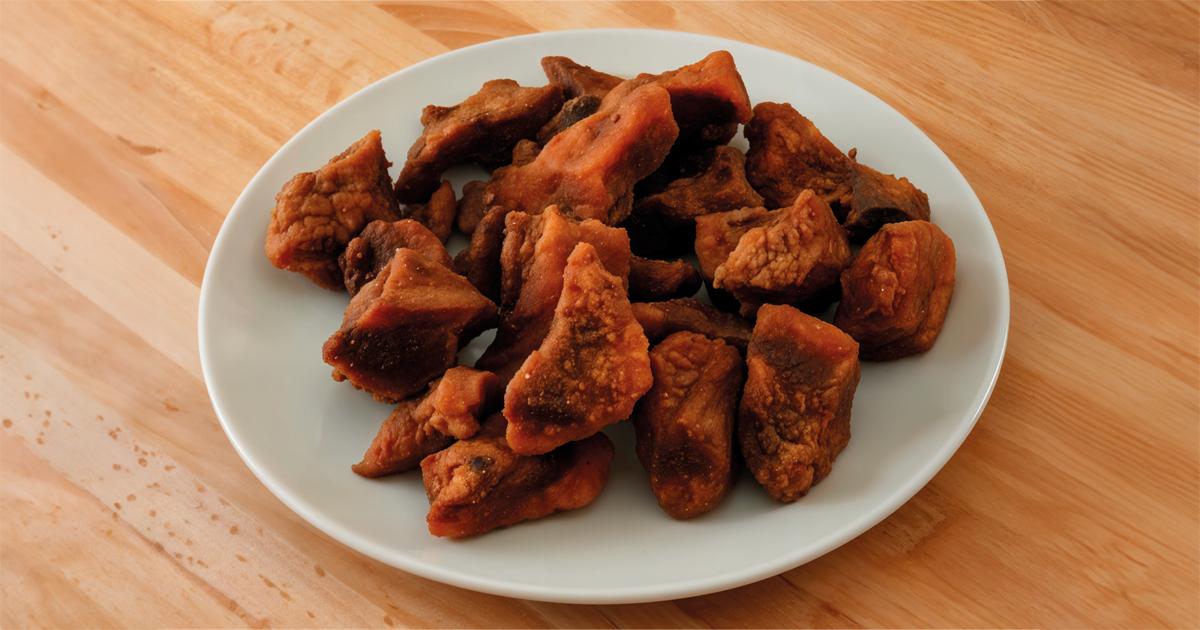
Chicharrones - A crunchy treat
Chicharrones come from a culinary tradition that was rooted in the need to make full use of every part of the animal. At a time when resources were limited, Spaniards found a way not to waste anything, including pig skins. Thus was born the idea of frying the skins, which became crispy and made an excellent snack or accompaniment to other dishes.
The first chicharrones were made in villages where pig farming was common. Rather than being discarded, the rinds were cleaned, salted and fried in fat, which gave them a unique flavor and texture. Over time, they became a popular delicacy that spread throughout Spain.
Although chicharrones are known throughout Spain, their preparation can vary from region to region. Each region has brought its unique culinary traditions and spices to this delicacy, making chicharrones a diverse dish with many variations.
- Andalusia - The region of southern Spain, particularly Cádiz, is known for its exceptionally tasty chicharrones. In chicharrones de Cádiz, the skins are fried with spices such as garlic, paprika and oregano, which gives them a distinctive flavor. Andalusians serve chicharrones as a hot snack, straight from the pan, often with a side of lemon.
- Catalonia - In Catalonia, chicharrones are often served in a more classic, uncomplicated form, sprinkled only with salt. They are often served as an accompaniment to bread or tortillas, making for an extremely tasty and filling combination.
- Galicia - In this region, chicharrones are called “torreznos.” Here they are prepared in a more rustic manner, often with more fat, which gives them a juicier texture. As in Andalusia, torreznos are a favorite snack served in bars to accompany local wine.
Although chicharrones originated in rural traditions, today they are part of modern cuisine, appearing in increasingly sophisticated renditions. Vegan versions of chicharrones, made with alternative ingredients such as vegetable peels or tofu, are also increasingly common, responding to the growing interest in plant-based cuisine.
Chicharrones are so popular that they can be found in almost every supermarket or grocery store in Spain. Pre-packaged chicharrones are usually available in the chips and other snack sections, making them an easy choice for lovers of crunchy treats. Thanks to their convenient packet form, they have become as popular as potato chips and are readily purchased as a quick snack for parties, movies or beer.
How are chicharrones prepared?
Chicharrones are prepared from pork rinds, which are thoroughly cleaned and often simmered to soften their texture. After this process, the rinds are fried in hot fat until golden and crispy. Often the peels are salted or marinated in spices before frying, which gives them a unique flavor.
Lard is best for frying, but modern versions of chicharrones increasingly use vegetable oils for a lighter touch. After frying, they are drained of excess fat and sprinkled with salt or other seasonings.
Chicharrones in the world
Chicharrones is a delicacy that goes beyond the borders of Spain.
In Latin America, especially in Mexico and the Caribbean, chicharrones are extremely popular. In Mexico, they are often served with hot sauces, and in the Philippines they are part of everyday cooking, where they are served with a variety of side dishes.
In the U.S., chicharrones are gaining popularity as a low-carbohydrate snack, ideal for those on a keto diet, which shows how versatile this dish can be in different parts of the world.
In Spain, they often accompany other tapas, or small portions of food that are served in bars as snacks to go with beer or wine. While in Spain, it is worth trying this crunchy snack, which may resemble Polish crackling in taste.








